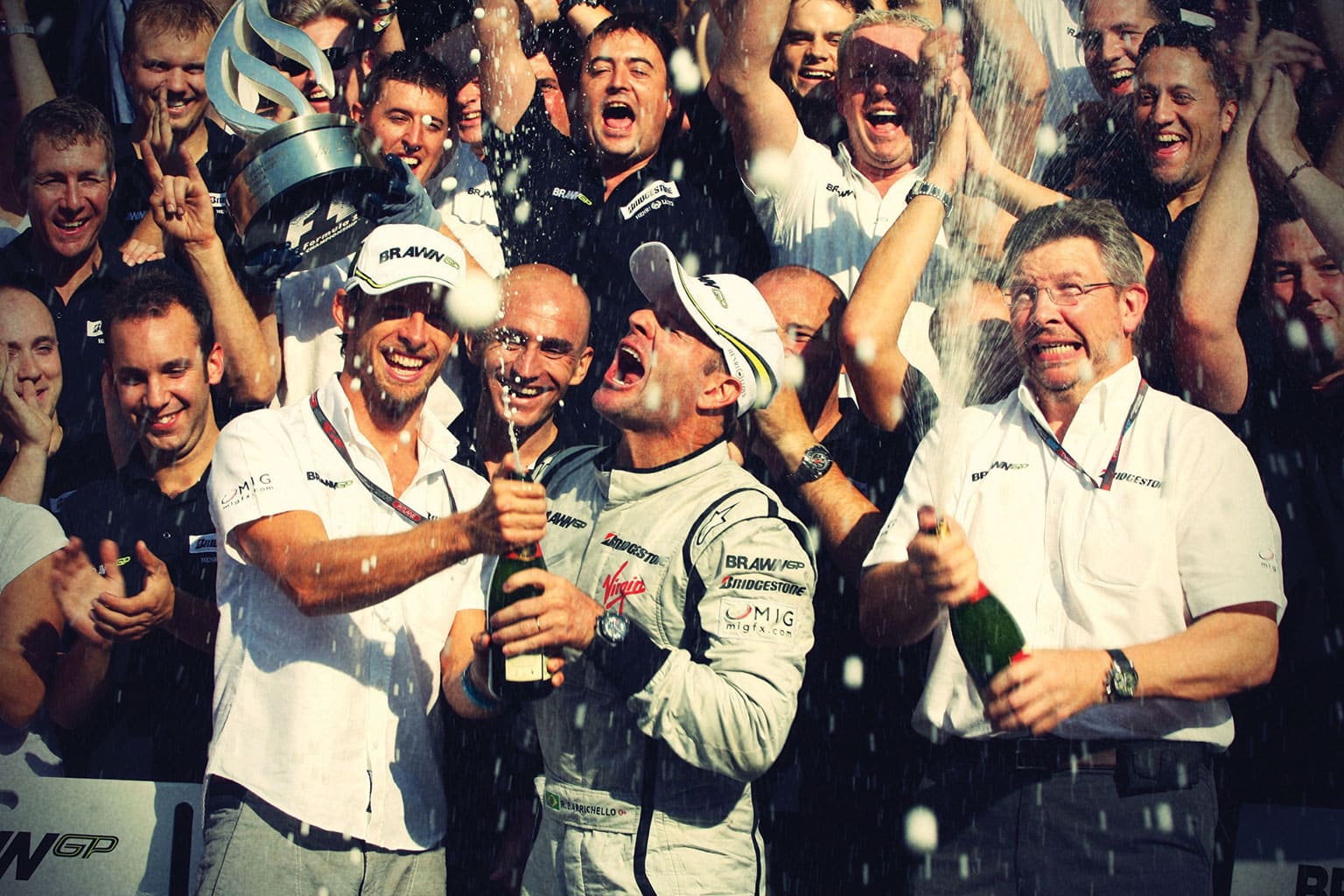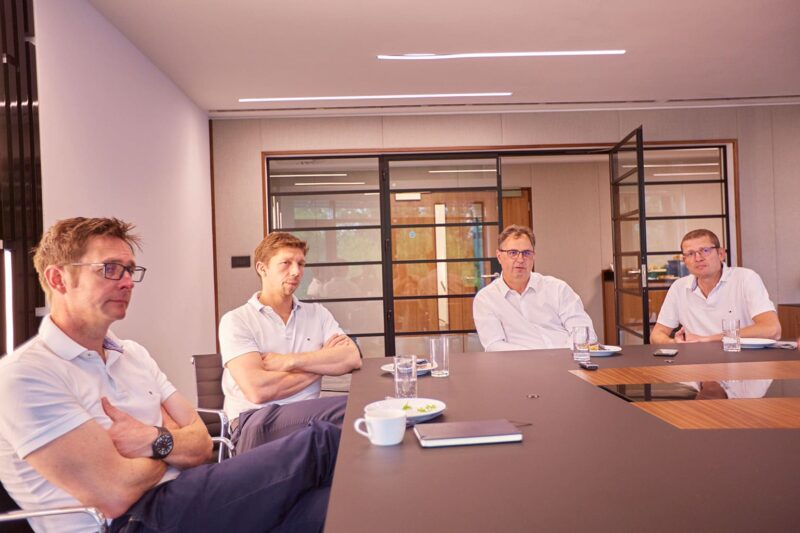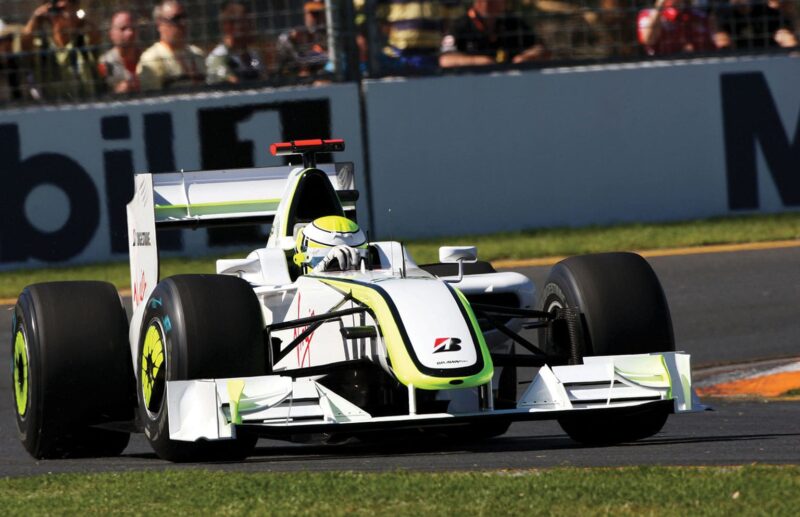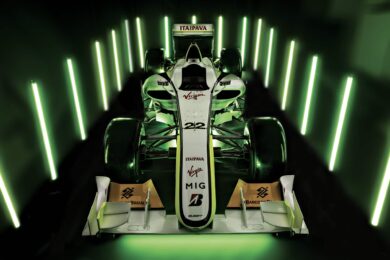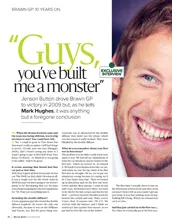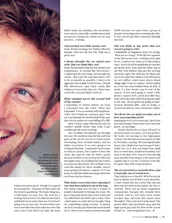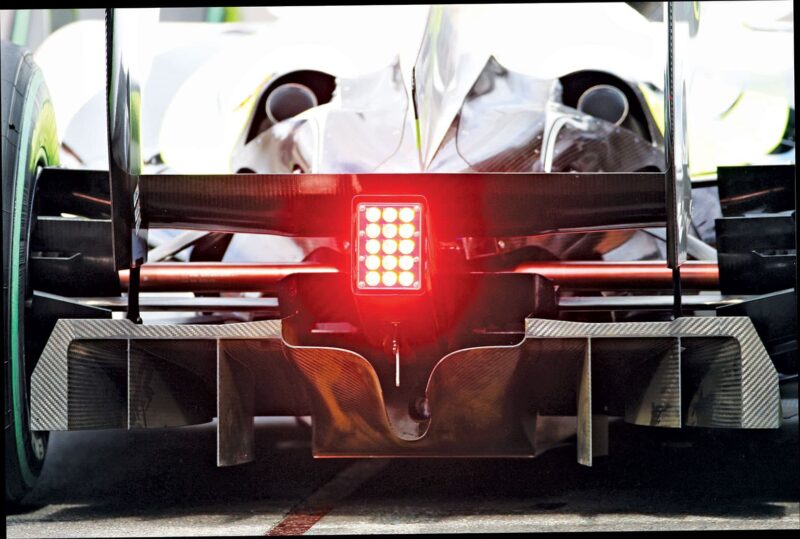Meadows: “In one day I had to lose 40 really good people from the race team, which was just heartbreaking.”
Their feelings might have been mixed, but their competitive instincts had been stirred by the pre-season performance of the Brawn BGP 001, as the Honda RA109 (now with a Mercedes V8) would henceforth be known. The team had contemplated running Ferrari customer engines – and there was one in the design office for the purposes of measurement – but the Mercedes deal was confirmed just before Christmas. “Looking back,” Cole says, “it’s amazing how quickly we could install the ‘wrong’ engine in a car.”
“We didn’t attend the first Barcelona test,” Shovlin adds, “but Toro Rosso was running its 2008 car with a Montréal-type rear wing, probably indicative of where they thought they’d be in downforce terms with their new chassis. Initially it was the fastest thing on the track and we knew how our 2008 car compared with that – and how the new one appeared to stack up in comparison. So we made a few calculations, taking on board that they were running with an unsuitable rear wing, and worked out that we’d probably be about 1.5sec quicker than anyone else – which surely couldn’t be right… But that was probably the first indication that other teams had given up chunks of downforce while we reckoned we had more than we’d had in 2008 – despite the regulation change that was supposed to reduce it. When I first saw some of the other cars, I thought, ‘Blimey, that looks like our wind-tunnel model from eight months ago.’ We’d shaken ours down at Silverstone and Jenson reported that it didn’t feel terribly good, but then we went to Barcelona and the speed was immediately obvious. Everyone started to say, ‘Yeah, they must be running light’, but someone at McLaren told us they’d calculated that they wouldn’t be able to match our times unless we’d been about 90kg underweight!”
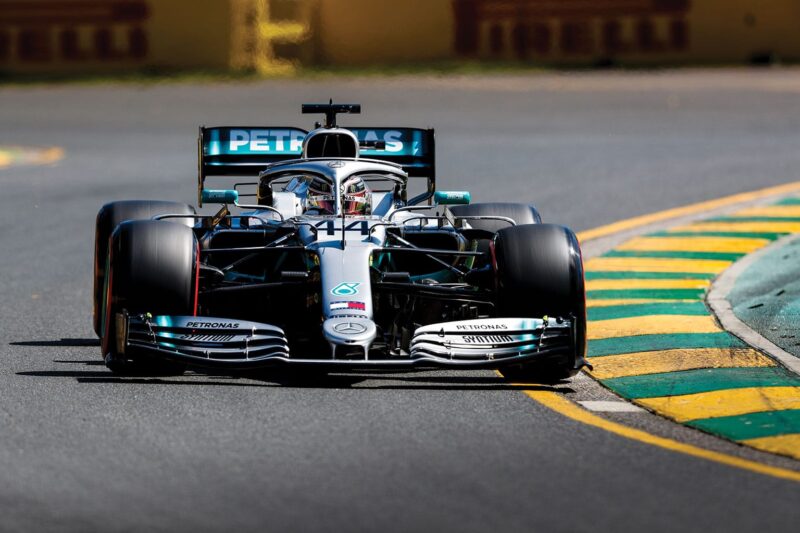
Mercedes bought the team from 2010 and has dominated the sport since
Motorsport Images
With the team’s future in the balance, bookies had been offering odds as high as 80/1 on Button to win the world title. “When you’re testing,” Meadows says, “those in the garage don’t always know the fuel numbers but can tell when the car looks quick. You always get a bit of pressure from the drivers to stick new tyres on and remove a bit of fuel, so we did and I think Jenson went about 2.5sec quicker than anyone else had managed to that point. When I turned around afterwards there was nobody in the garage – I think they were all on their laptops, trying to place bets…”
Shovlin: “I called home to suggest a wager, though with hindsight we didn’t put enough on. We’d had our first child by then and the district nurse came round to do a check to find my wife on an online gambling site at about 8.30 in the morning…”
“Our spare tub wasn’t ready until Monaco, so one big shunt and we’d have been stuffed…”
For all the car’s speed, however, Brawn GP was still vitally short of resources. “We were acutely aware that we were up against teams with more people, more everything – we had a head count of about 50 in Melbourne,” Cole says. “We had absolutely no fallback, either, and very few spares. Over the winter the instruction had been issued to keep parts production to a minimum – and that was misinterpreted by some people as one per car… After the Bahrain Grand Prix, race four, everything was completely shot.”
Shovlin: “We were probably saved by the fact there was so much stuff in all the store rooms. The car build budget was laughably small, in context – about one million quid for two cars.”
Meadows: “I think we had enough brakes in the cupboard to last us the whole year. We built only three tubs – and the third, our spare, wasn’t ready until Monaco, so one big shunt and we’d have been stuffed…”
Cole: “It was also fortunate that all the tools in our machine shop had been purchased outright, for cash, so we had no leasing bills. When Honda walked away they left behind a very solid infrastructure.”
Shovlin: “When we arrived in Melbourne for the first race, we had this fantastic sense of clarity. Previously we’d had all these Honda engineers running around and changing stuff, the team was big, things happened and it was hard to keep an eye on everything that was going on. Now, all of a sudden, you just had to ask Ross – and that was the extent of the red tape.”
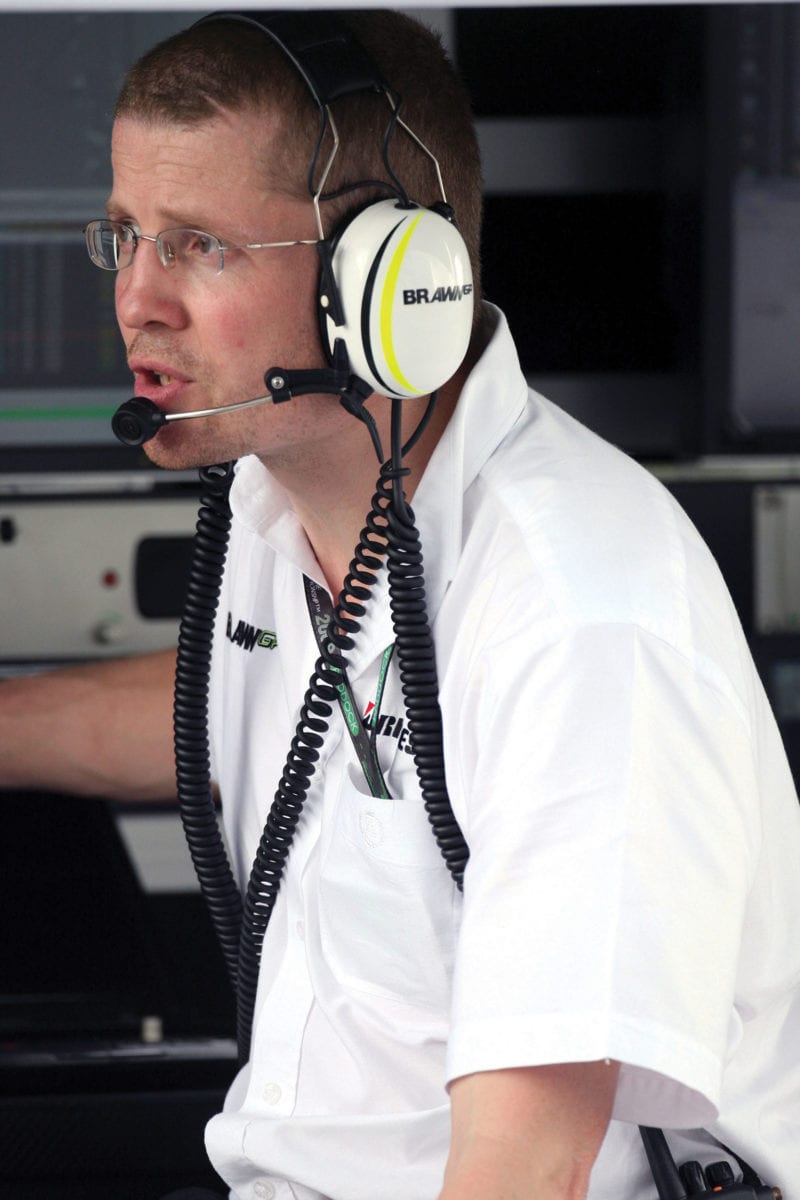
Cole in his general engineering role
Motorsport Images
Along with Williams and Toyota, Brawn was protested in Australia over the legality of its double-diffuser floor concept, although it was eventually declared legal and rivals quit grumbling in order to get on with making their own. “During testing people noticed that we had something,” Shovlin says, “but they couldn’t understand quite what it was – or how we’d constructed it legally. They were all trying to get close-up photos, so in Melbourne we waited until it was dark before taking the car to scrutineering checks. Nick Tombazis from Ferrari came running with a torch and a camera, trying to get photos of the car’s underside, but there is a certain etiquette in the way you go spying on other teams. Ross appeared and said, ‘If you don’t f*** off I’m going to ram that torch up your arse’.”
An effective deterrent, apparently.
The Brawns of Button and Rubens Barrichello duly annexed the front row (Cole: “We went out for pizza and wine – I thought it was best to celebrate in case that was our lot for the year”) before taking a one-two that was less straightforward than it might have been.
“One of the guys we’d let go was Gary Holland, a gearbox specialist and also our refueller,” Meadows says. “He’d decided to take Honda’s redundancy package and start up his own plumbing business, so we did Melbourne with a stand-in refueller and each stop was a few seconds slower than it should have been. That really shouldn’t have been our race and I felt we wouldn’t win much else if we carried on like that, so I spoke to Ross and we did a deal with Gary to fly him out to races on Saturday nights to operate the fuel rig for the rest of the year.”
Victory would be the first of six in the opening seven races for Button – he was third in China, behind the Red Bulls of Vettel and Mark Webber – while Barrichello backed him up with three second places. There was, though, some good fortune. The Malaysian GP was stopped early, due to torrential rain and fading light, and didn’t restart. “Just as well, really,” Vowles says, “because Jenson’s steering wheel was absolutely full of water and we’d never have been able to get the thing going again. Toyota should have won Bahrain – they’d tested there and proved really quick, but come the race they made the wrong tyre call at the first stop and rapidly went backwards. That was a bit of a gift. In Barcelona we had a new front wing flap that had been built incorrectly – and we didn’t notice until after qualifying, so weren’t allowed to change it. There seemed to be almost one incident per race.”
“I remember there being an attitude of having nothing to lose”
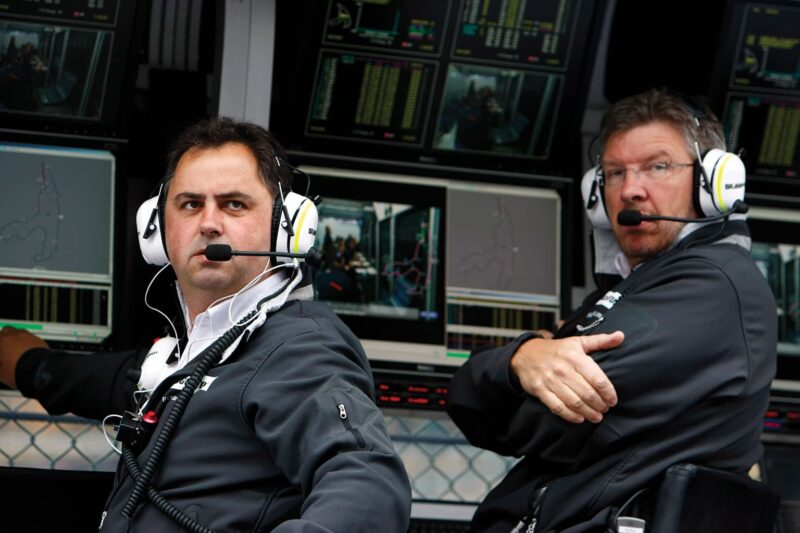
Meadows on the pit wall with Ross Brawn
Motorsport Images
Meadows: “In Monaco we fitted the wheel shields the wrong way around – and we also had a thing called the FFA, an adjustable front wing flap. But that never worked, as in ever.”
Cole: “And there was no curfew in those days, so we could stay up all night confirming that it still didn’t work…”
Vowles: “The camaraderie was there, because we were a small team and every one of us was doing what would have been the jobs of several people. You felt exhausted the whole time. In Bahrain, where I was trying to fix those front flap adjusters, I fell asleep on the pit floor at 3am or something.”
Shovlin: “Almost everything was a battle. In Turkey we had a seventh gear that was about 40kph too short – the wind had changed direction and we fitted the wrong ratio. At one part of the track we must have been on the limiter for about 600 metres – it didn’t make a massive difference to lap time and Jenson was OK because he was out on his own at the front, but Rubens had made a bad start and simply couldn’t overtake. At every race we seemed to be fighting, whether it be a load of knackered old parts, updates that didn’t quite work or a car that wasn’t quick enough – at no point did the season feel fully under control.”
